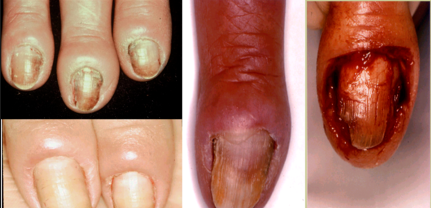
You’ve noticed your nails changing. Perhaps they’ve developed strange ridges, taken on a yellowish tint, or there are odd, pinpoint dents in the surface. The immediate, common assumption is a fungal infection. After all, it’s what we see advertised on television—creams, polishes, and pills all promising to defeat the dreaded “fungus among us.”
But what if the treatments aren’t working? What if the changes don’t fit the classic pattern of thickening, crumbling, and debris under the nail? It’s time to consider a different story. These nail changes aren’t fungal. They are very often evidence of a deeper, internal process, a visible report from your body’s front lines.
Your nails are a window into your overall health. They grow slowly, providing a recorded history of what your body has been experiencing over the past several months. Changes in their color, texture, and shape can be the first visible clue to a systemic issue.
Decoding the Messages on Your Fingertips
Here are some common nail changes and the internal evidence they may be presenting:
- Pitting: Small, Ice-Pick Dents
- The Evidence: Tiny, random depressions in the nail surface, as if it were tapped with an ice pick.
- What It Points To: This is a classic sign of Psoriasis, an autoimmune condition. The pitting is evidence of a flaw in the nail matrix (the nail’s root) caused by the same rapid skin cell turnover that creates plaques on the skin. It can also be associated with inflammatory arthritis. This isn’t an infection; it’s a manifestation of an overactive immune system.
- “Spooning” (Koilonychia): Soft, Concave Nails
- The Evidence: The nail softens and curves upward at the edges, forming a dip deep enough to hold a drop of water.
- What It Points To: This is a well-known piece of evidence for Iron-Deficiency Anemia. The lack of iron affects cell growth and the structure of the nail itself, making it thin and weak enough to be molded by the pressure of the fingertip. It’s your body showing a deficit in a fundamental building block.
- Terry’s Nails: A Dark Band at the Tip
- The Evidence: The nail looks mostly white or pale, but the very tip has a narrow, pink or brownish band.
- What It Points To: While it can appear with normal aging, the sudden development of Terry’s nails can be evidence of underlying liver disease, congestive heart failure, or diabetes. It suggests changes in the blood supply and connective tissue underneath the nail.
- Beau’s Lines: Deep, Horizontal Grooves
- The Evidence: Deep, side-to-side grooves that run across the nail, as if a furrow was plowed into it.
- What It Points To: This is some of the most direct evidence your nails can provide. A Beau’s line marks a period when the nail matrix temporarily stopped growing due to a severe physical stress. The evidence points to a past event, such as a very high fever, major surgery, a heart attack, or a period of intense chemotherapy. The location of the line on the nail shows you how long ago the event occurred, as nails grow about 1 mm per week.
- Yellow Nail Syndrome
- The Evidence: A distinct, slow-growing, yellowish-green discoloration, often accompanied by thickened nails and a loss of the cuticle.
- What It Points To: This is evidence of a problem in the lymphatic system. The nails change because of swelling (lymphedema) in the tissues that support nail growth. It can also be associated with chronic respiratory conditions, like chronic bronchitis.
Why This Distinction is Critical
Misdiagnosing these changes as a simple fungus leads you down a frustrating and ineffective path. You’ll waste time and money on antifungal treatments that cannot address an autoimmune condition, a nutrient deficiency, or a systemic disease.
What to Do With This Evidence
- Don’t Panic, But Do Pay Attention. Look at all ten nails. Is the change symmetrical? That often points to an internal cause.
- Take a “Nail Photo” to Your Doctor. A picture can show the progression over time.
- See a Dermatologist or Your Primary Care Physician. Describe all your symptoms, not just the nail changes. This combined evidence is what allows for an accurate diagnosis.
These nail changes are not a superficial flaw to be covered with polish. They are a diagnostic code, written in ridges and grooves, waiting to be deciphered. By learning to read this evidence, you can move beyond treating a symptom and start addressing the root cause, ensuring your health is supported from the inside out.